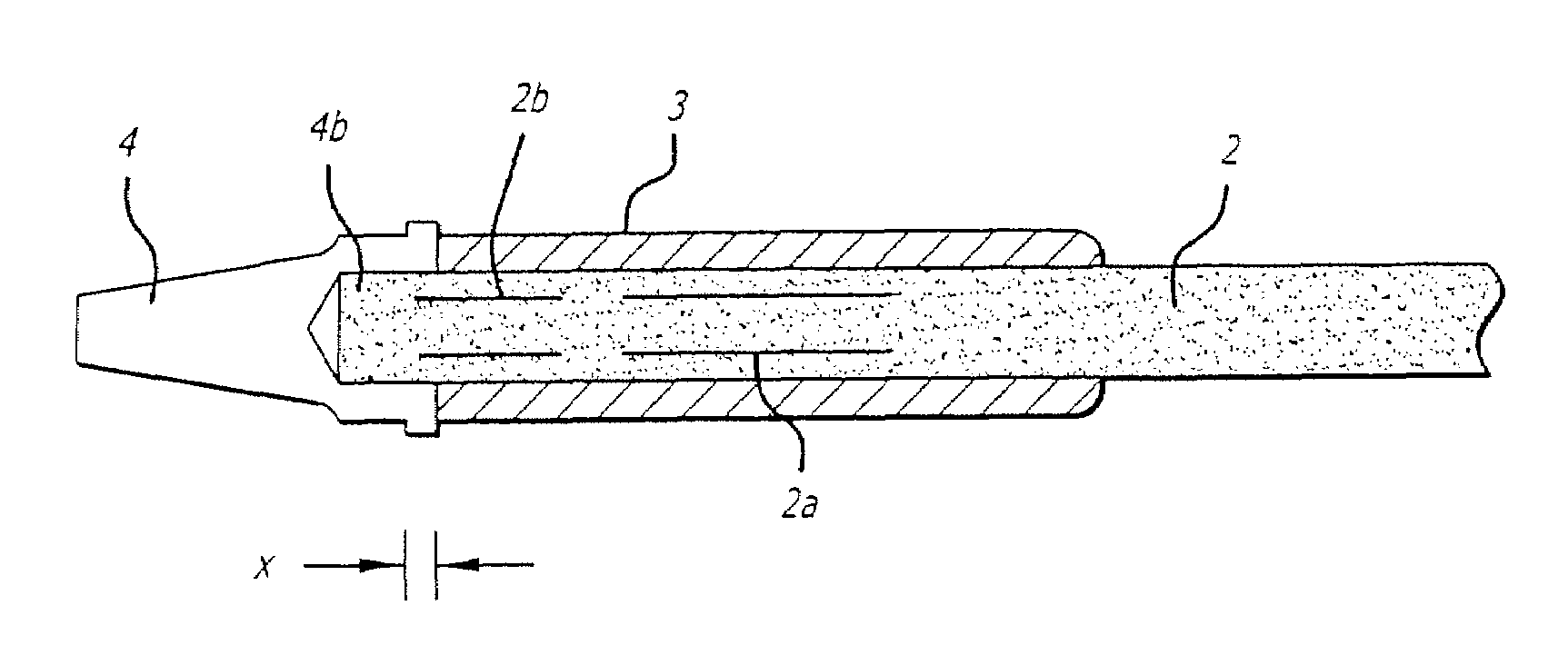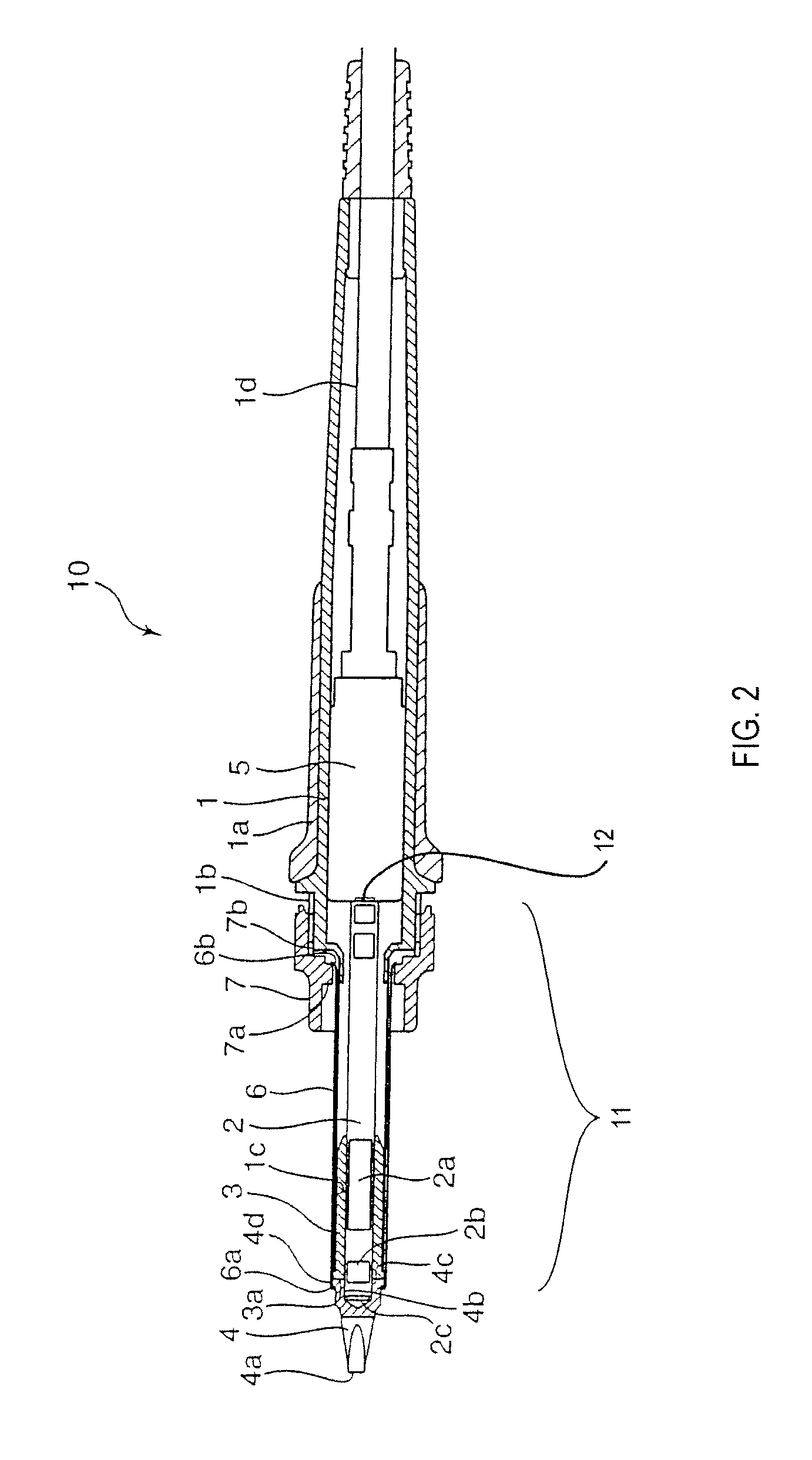Soldering or desoldering iron
a technology of desoldering iron and desoldering iron, which is applied in the direction of ohmic resistance heating, manufacturing tools, and sleeve b>53/b> to erode, and achieve the effect of minimizing the cost of replacement parts
- Summary
- Abstract
- Description
- Claims
- Application Information
AI Technical Summary
Benefits of technology
Problems solved by technology
Method used
Image
Examples
Embodiment Construction
[0049]FIG. 1 illustrates a soldering iron generally at 10 having a heater cartridge assembly 11 and a removable and replaceable tip 4 protruding from the assembly. The tip 4 may be replaced with another tip as the tip wears out or when a different tip is better suited for a particular soldering operation. The soldering iron 10 includes a clamping ring or member 7 that releasably holds the heater cartridge assembly 11 to the casing 1. As further discussed below, the heater cartridge assembly 11 includes a locking tube 6 that retains the tip 4 such that the tip protrudes from the locking tube. To replace the tip 4, the clamping ring 7 may be disengaged from the casing 1 to release the heater cartridge assembly 11 from the casing, and the tip 4 may then be released from the heater cartridge assembly 11 and replaced with another desired tip.
[0050]FIG. 2 is a cross-sectional view of the soldering iron 10, and FIG. 3 is a close up view of the heater cartridge assembly area. The heater car...
PUM
| Property | Measurement | Unit |
|---|---|---|
| thickness | aaaaa | aaaaa |
| depth | aaaaa | aaaaa |
| depth | aaaaa | aaaaa |
Abstract
Description
Claims
Application Information
 Login to View More
Login to View More - R&D
- Intellectual Property
- Life Sciences
- Materials
- Tech Scout
- Unparalleled Data Quality
- Higher Quality Content
- 60% Fewer Hallucinations
Browse by: Latest US Patents, China's latest patents, Technical Efficacy Thesaurus, Application Domain, Technology Topic, Popular Technical Reports.
© 2025 PatSnap. All rights reserved.Legal|Privacy policy|Modern Slavery Act Transparency Statement|Sitemap|About US| Contact US: help@patsnap.com



